I'm going to talk Do It Yourself or DIY Sound Booths. And I'm going to give you tips on building a portable Do It Yourself sound booth in your home or office and more importantly, why you would want to do so.
Subscribe at:
NOTE: Complete transcript available at the bottom of the page.
Screw The Commute Podcast Show Notes Episode 379
How To Automate Your Business – https://screwthecommute.com/automatefree/
Internet Marketing Training Center – https://imtcva.org/
Higher Education Webinar – https://screwthecommute.com/webinars
[05:56] Tom's introduction to DIY Sound Booth [08:04] How Tom's sound booth works [11:51] Locate it near other recording equipment [12:40] Putting pipes together to build a booth [18:03] What to add inside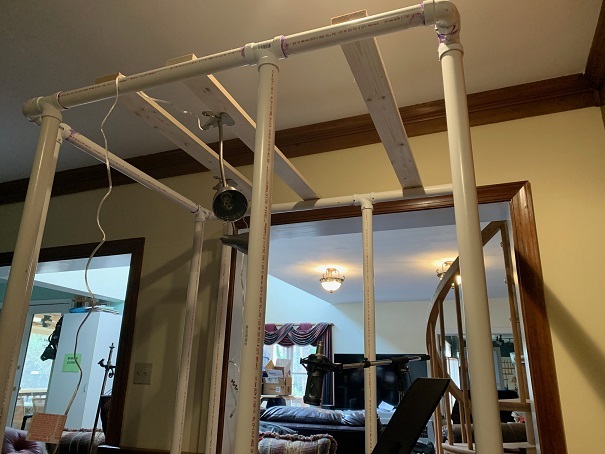
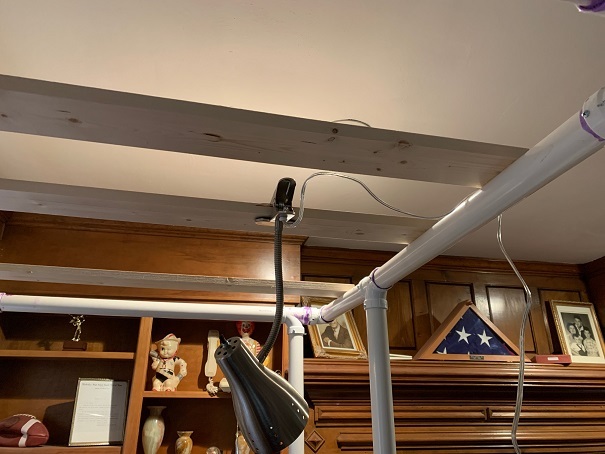
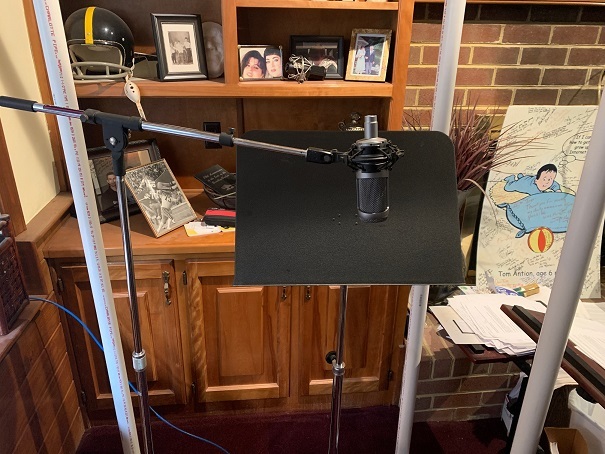
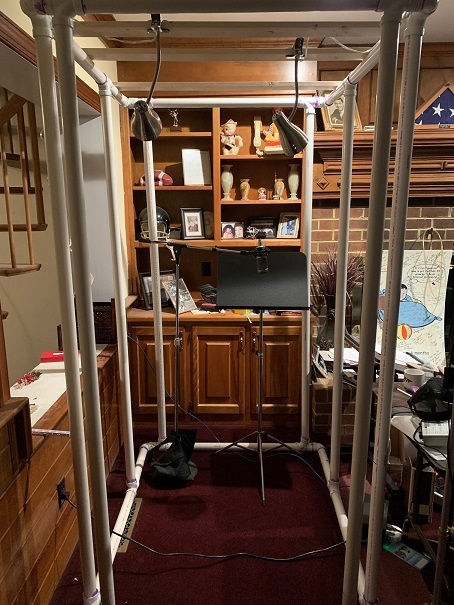
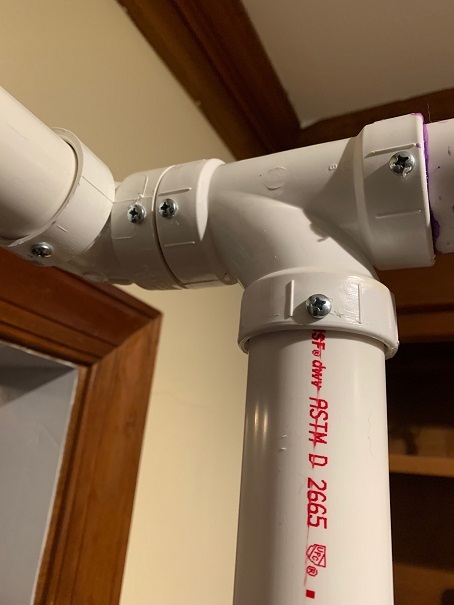
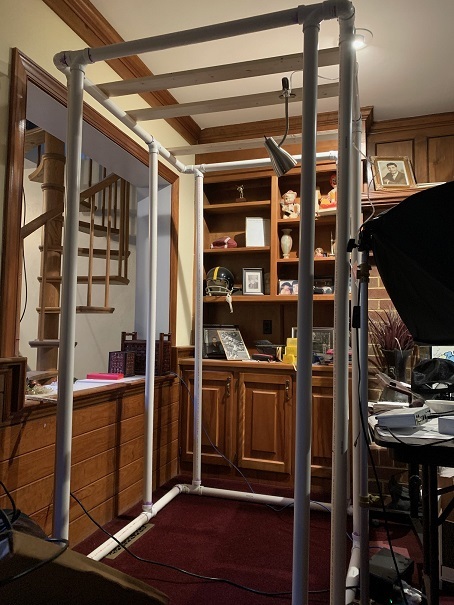
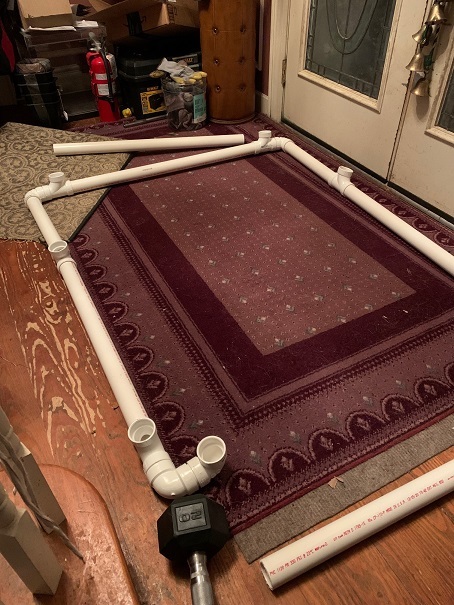
Higher Education Webinar – https://screwthecommute.com/webinars
Screw The Commute – https://screwthecommute.com/
Screw The Commute Podcast App – https://screwthecommute.com/app/
College Ripoff Quiz – https://imtcva.org/quiz
Know a young person for our Youth Episode Series? Send an email to Tom! – orders@antion.com
Have a Roku box? Find Tom's Public Speaking Channel there! – https://channelstore.roku.com/details/267358/the-public-speaking-channel
How To Automate Your Business – https://screwthecommute.com/automatefree/
Internet Marketing Retreat and Joint Venture Program – https://greatinternetmarketingtraining.com/
Derek Doepker's Audio webinar – https://joinnow.live/a/CuLUaD
DIY Sound Booth video part 1 – https://youtu.be/IjZo0eVzKSE
DIY Sound Booth video part 2 – https://youtu.be/zyGzBFpPyAQ
US Cargo Control – https://www.uscargocontrol.com/
Podcasting 901 webinar – https://joinnow.live/s/A9OZGa
Internet Marketing Training Center – https://imtcva.org/
Christmas 2020 – https://screwthecommute.com/378/
I discovered a great new headline / subject line / subheading generator that will actually analyze which headlines and subject lines are best for your market. I negotiated a deal with the developer of this revolutionary and inexpensive software. Oh, and it's good on Mac and PC. Go here: http://jvz1.com/c/41743/183906
The WordPress Ecourse. Learn how to Make World Class Websites for $20 or less. https://screwthecommute.com/wordpressecourse/
Join our Private Facebook Group! One week trial for only a buck and then $37 a month, or save a ton with one payment of $297 for a year. Click the image to see all the details and sign up or go to https://www.greatinternetmarketing.com/screwthecommute/
After you sign up, check your email for instructions on getting in the group.
Want The Transcript for this episode?
Episode 379 – DIY Sound Booth
[00:00:08] Welcome to Screw the Commute. The entrepreneurial podcast dedicated to getting you out of the car and into the money, with your host, lifelong entrepreneur and multimillionaire, Tom Antion.
[00:00:24] Hey, everybody it's Tom here with Episode three hundred seventy nine of Screw the commute podcast. Today, I'm going to talk Do It Yourself or DIY Sound Booths. And I'm going to give you tips on building a portable Do It Yourself sound booth in your home or office and more importantly, why you would want to do so. I hope you didn't miss Episode 378. That was my Christmas episode and publicly thanked a lot of the good things and good people in my life. And hopefully it'll stimulate you to write down and think of some of the important people in your life.
[00:01:01] That was Episode 378. And of course, any time you want to go to an episode and you will want to come back to this episode, you go to screwthecommute.com and then the episode number. 379 is today's episode and 378 was the Christmas episode. But the reason you want to come back to this is because I'm in the midst of building my sound booth and I'm going to update the show notes as I progress in this. So I've got the frame built now and put some stuff in there just to show what it's going to end up like, but waiting for the coverings to come in. Anyway, you'll see the updated pictures and then after I get it all done, I'll put a sample of the sound that I can get out of it in one of the episodes of this podcast. So keep checking back. Episode 379. How would you like to hear your own voice here and screw the commute? Well, the shows helped you out in your business or given your ideas to help you start a business. We want to hear about it. Visit, screwthecommute.com, look for a little blue sidebar that says send a voicemail, click on it, talk into your phone or computer and tell me how the shows helped you. And also put your website in there and you'll get a big shout out in your own voice on a future episode of Screw the Commute.
[00:02:24] Now pick up a copy of our Automation eBook. This is one of the books I'm going to turn into an audiobook here in my new booth as soon as I get it done. But anyway, you get it free. It's a 27 dollar e-book with all kinds of tips and tricks to make your life easier. That's my job, folks, is to help you make money and make your life easier. So pick that up at screwthecommute.com/automatefree. Now, while you're over there, we also have a cool podcast app. And it's a new year coming up. And it's time for you to up your game a little bit in technology. All these things that technology will do for you. Sometimes people are, oh, I don't know how to do it. I don't know. Well, we teach you how to do it. So grab a copy of our podcast app. You can put it on your cell phone or tablet. We have complete video and screen capture instructions on how to use it. If you can't figure it out, Larry, our podcast guy, will walk you through it one on one. Don't worry about it. Just take advantage of all the things we have for you here so screwthecommute.com/app. And if you can't figure it out, email Larry@Antion.com and he will set up an appointment and help you personally.
[00:03:48] That's the way we do things around here. I also want you to give the gift of education, I'm not saying we're having an after Christmas sale, OK, but but one of the best gifts you could ever give to Hay yourself or to a person in your life is the gift of a future of a career that's in high demand. I'm so sick of these kids paying a fortune and going into deep debt and then learning how to protest that these four year colleges I mean, if you saw the statistics on the average amount of time, they're actually in class. You would say, I mortgaged my house for this. It's like that old song. I shaved my legs for this right now. Oh, it's crazy. It's like eight hours a week total, including preparation. The rest of the time is shopping, eating and party. That's statistics from people in the education field. It's not stuff I just made up. Fact, I have a whole webinar on how colleges are ripping people off. So anyway, I have a school that knocks out all these problems. It's IMTCVA.org. It's certified to operate by SCHEV, the State Council on Higher Education in Virginia. It's the only one in the country that's Internet marketing dedicated to that single topic. And why? Because I've been living this lifestyle for 26, going on 27 years now.
[00:05:19] And the skills that I teach are in super high demand, people won't be competing for jobs at Starbucks when they go through this school. We've got people making money before they even graduate. So check it out at IMTCVA.org. And if you're in my mentor program, which I'll mention later, you get a scholarship that you can either use yourself or gift to somebody. So it's you know, you're just crazy if you don't get these skills, especially brought to light. I've been preaching it for 22 years, but especially brought to light with the pandemic in people forced to be home. So check it out.
[00:05:57] All right. Let's get to the main event, a Do-It-Yourself Sound Booth. Now, why would I be building one of these things? All right. Well. I was inspired to turn my many books into audio books when I hosted a guy named Derek Doepker on a fantastic webinar he did for for everybody on my email list on this topic. And you got to watch the webinar, the replay's ready. I'll have a link in the show notes to it for you.
[00:06:26] But you might say, well, hey, Tom, you already get pretty good sound on this podcast. Why bother with the sound booth? Well, the reason is, is that the audio requirements for a major audio book publishers is very exacting. So the less noise they have in the recording, the easier it will be to get the audio accepted.
[00:06:49] And I mean, in this podcast, if my dog barks or the phone rings, I just usually joke about it or leave it in or edit it out or whatever, but that won't fly with Audible and other big audio book producers.
[00:07:04] Now, let me emphasize, though, no, you do not have to build a sound booth to do an audio book. And also, let me emphasize, I'm not building a soundproof room, if my dogs bark, I have to rerecord that section after they shut up. Soundproof rooms cost a small fortune. And that's not what I'm talking about here.
[00:07:28] The sound booth is just going to be a tiny space where the sound of my voice is not going to bounce around all over the place. The blanketed walls are just going to absorb most of the sound instead of bouncing. And again, let me emphasize, you do not have to do this to record your audio book. I just always go overboard. And while normal people were putting up a Christmas tree, on Christmas Eve, I was building a sound booth. If you know me, doing something like that is not uncommon for me during the holiday.
[00:08:04] All right. How does this work? Well, the frame of your booth is going to be made out of PVC pipe. It's the rigid white stuff you see at Home Depot and Lowes. Now, most online plans use one inch schedule 40 pipe. Schedule 40 just means the wall thickness of the pipe. Now, I wanted a little stronger booth, so I used a one and a half inch, schedule 40. Now Schedule 40 is variable. So the bigger the pipe, the thicker the wall is. So it's going to be stronger than a one inch, not a whole lot, but a little bit better. Now, this raised the cost a little bit, but not really much overall. Now, there are tons of YouTube videos of people showing you how they built their in-home sound booth. I've talked about this for years for ways you could improve your sound with makeshift items like talking into a closet and lining a microwave sized cardboard box with soft foam and putting your microphone in the box, all kinds of tips and tricks like that that I've used and taught. So this is my first effort at actually dedicating an area of the retreat center that I'm in now to this booth.
[00:09:24] And I'm specifically doing it because of audio books and they're exacting standards. And also, you know, I'm a stickler for super high quality. I mean, there's plenty of audio books that get accepted that aren't super high quality. So, again, I got to emphasize, you do not have to do this, but I kind of like tools and I like, you know, build and stuff.
[00:09:46] And so that's what I'm doing. OK, now I'm going to put a link to the videos I chose in the show notes, along with a couple pictures of the progress of my booth, which I'll update the photos as I progress so you can stop back to see the new photos as I add them. Now, the reason I chose the design I did was because there's no pipe on the floor that you have to step on or over to get into the booth, but that's just a small thing there. It's no big deal. All right, so part one of the video I have is the basics of how to do it, what parts you need and so forth, you know, elbows and T joints and pipes and all that stuff. They also tell you what length to cut everything to and all that.
[00:10:38] Now part two of the video is expanding the size and putting the entrance door on the side instead of the back if you wanted to. You don't have to. Now, this was nice because we're just making a few of the pipes longer, you can expand the booth to any size you want without really changing the design. I expanded at about a foot wider and about a foot longer than the three by three that I could just barely fit in myself with my fat gut, you know? Now, when you make it bigger, you may want to put some braces on top, or you could just tie a rope between the pipes on the top. Because, see, when you put one of these sound blankets on the top, it doesn't you know, the bigger it is, it'll sag down. And I'll put a picture in of the braces that I put. I used one by fours, which is just a, you know, small lightweight piece of wood. And it also gave me a place to clip on lights. You'll see those in the picture, too. So I can see my script because it'll be awful dark in there when it's all closed in.
[00:11:51] All right, now, I located my booth near my podcast set up. That way, if I wanted to, I could just run a longer microphone cable to my podcast set up and maybe put a second monitor in my booth to make sure the computer was actually recording. And, of course, like my podcast training, I also record a backup on a digital recorder and then save everything to the cloud. So having the booth next to my whole podcast setup is very efficient because maybe just a couple of longer cables and a spare monitor and I'm good to go. I don't have to start a whole new system somewhere else. Now, if you're interested in podcast training, I got a free webinar with a link in the show notes. So check that out if you really want to do a podcast.
[00:12:41] All right, now here's a super tip about putting all the pipes together that I learned the hard way, OK? Say, first, I've glued together many plastic pipes while doing plumbing in my rental properties in my old house. Now, this consisted of one or maybe two joints in a basement or out of the way place, I mean, there's no big deal that matter if you drip glue all over, it didn't make any difference. So in the beginning, I started gluing the joints of my sound booth frame together, and I quickly found out that doing this in a gorgeous living room and making a permanent structure that's way too big to fit through doors. If I wanted to move, it was a lousy idea. All right. So so then I got smart and I quit gluing and I started drilling and screwing the joints together. This is very easy. Don't let it scare you. I'll have a picture of this in the show notes also. But but here's how you do it.
[00:13:43] I used two electric drills, but you don't have to have to you can just use one if you want to. But one of them had a small drill bit and the other had a Phillips head bit for putting the screws in. I mean, you could easily just use one drill and a Phillips head screwdriver. The screws are only, I don't know, maybe a half an inch long. And so you could, you know, just use a regular screwdriver to put them in if you didn't have two drills. So what you do is you drill each joint and it's very easy drilling. This is plastic, folks, and you put a small screw in each joint to keep the pipes from coming apart. This way, you don't have to glue everything and stink up the place and drip it on your carpet and oh man, it was just getting to be crazy. And also the better part is it makes everything totally portable. You can take it apart really easy. And if you did take it apart, I would mark each piece with a piece of masking tape and write on the tape where the piece went or maybe number them and make a little log so you can put it back together easily.
[00:14:49] You probably want to have a little mallet or, you know, rubber hammer or something, you know, some of these joints are pretty tight and you can pound them together with the rubber hammer. So that's how you make the frame.
[00:15:01] Now, from everything I've studied and I studied some really, really top end audio engineers when I was planning to do this and anything from, you know, local musicians in their garage and everybody and from everything I studied, the most cost effective way to cover the booth is to use moving blankets. The heaviest and thickest ones are the best.
[00:15:28] And I have bought some from Harbor Freight before, and they were so thin, you could just about have used them as a sheet. All right. So they were only like four dollars apiece. While these will cost you much more than that. But that's a good way to start. Now, if you can find ones that have grommets in them and some even have a loop thing that you Velcro to Velcro them around a pipe to hold them up. So that's great. But if you have grommets, you can use like these cheap shower curtain rings or even zip ties to hold the thing up on the pipe frame. Now, if there's no grommets, you're going to have to put them in yourself where you'd have to get a whole bunch of big, strong clamps that clamp them up there. It's much handier if there's grommets in them. And I don't think it'd be that easy, I mean, it's not hard to put grommets in things like tarps and stuff. There's little kits you can make and you hammer the thing, the grommet in there, and it keeps the thing from tearing. But for something super thick, it might be a little harder to do. I'm not sure about that. You could get grommets thick enough to to work in a big, heavy moving blanket anyway. So try to get one with the grommets if you can. And moving blankets come in weights per dozen. I think the highest is 110 pounds per dozen. I only need about four for my booth. You can smaller both the three by three could probably get away with three. You know, you have to have one for the the top and go around the sides and leave a place to open up to get in and out of the thing. So mine costs 32 dollars each and and it can go up as high as 90 bucks depending on where you get him. I got mine at UScargocontrol.com.
[00:17:18] And they are, heavy, so be ready to pay for some shipping. Now they actually have one specifically geared for sound control and they go up to like 42 dollars apiece. But still, that's cheaper than most other audio places that are charging 80 bucks, the ones that aren't even as big or good. So. So U.S. cargo control seem like a good deal to me. And they had the grommets in. I got the 72 by 80 once. And that seems to be good for my booth.
[00:17:48] Now, I'm not saying you have to go with the super expensive ones to start. Start with anything you can afford and then see if it's good enough. Sound wise, you can always add another layer of cheap ones on top later and that doubles the thickness.
[00:18:04] Now, inside, I'm putting some clip on LED lights, you want to make sure whatever light you have is quiet, you don't want your fluorescent or something like that that's going to make a hum or put noise into the room.
[00:18:17] I'm putting a music stand in there. I have a picture of that, but it's all metal, so I'm going to put a towel over it to avoid the sound, hitting it and bouncing all over the place. Everything in there is just try to you try to keep it from flat hard surfaces so that you don't defeat the purpose of the thing.
[00:18:37] Putting in a mic stand, a microphone, probably a pop screen, and then maybe a second monitor run to my iMac so that I can make sure everything is still working, you know, while I'm in that booth.
[00:18:51] They'll probably clamp a cup holder to one of the upright pipes. I mean, you have to stay hydrated and you can't really have a noisy fan in the booth. I'll probably clamp another little hook onto or screw a hook into one of the pipes to hang my headset on. You definitely want to use a headset, a large, nice studio headset when you're if you're going to bother to do this is no sense killing yourself to build this thing and then trying to listen to crappy speakers to what you're recording anyway with the cup, or you got to stay hydrated. And if it's summertime, it could get hot in there because you can't really have your air conditioning running into the thing that makes noise. And they do have noiseless fans, but they're kind of pricey. They started, you know, like 100 bucks and go up. So you might want to cool your place down, you know, keep the flaps open, let cool air get in there, record, and if it gets too hot, then leave and take a break, you know, so and you should be taking a break anyway.
[00:19:52] But you got to stay hydrated now, unless you have a really quiet computer, you don't want to put a computer in the booth because you're just going to add noise, which kind of defeats the purpose again. So and also, don't be fooled thinking your computer is quiet, you may have a laptop that's quiet, but then when it heats up, the fans turn on and it's not quiet anymore and you won't hear it possibly or notice it if you're in the midst of your narration of your book. So be careful that that's why I'm just going to put a second monitor in there. And so the whole computer is outside of the booth.
[00:20:31] Now, lots of people use iPads or tablets for their script instead of paper. That's fine. I don't know too many people who would record into an iPad because audio books are really long, take up a lot of memory and a lot of storage capacity, and you might run out of space. I don't know.
[00:20:51] They're not going to make any noise on it. But the thing is, is that you'd hate for it to quit in the middle.
[00:20:58] All right, well, that's it for today. Check back to these show notes for Episode 379 to see the progress. And when it's all done, I'll try to put a simple audio from inside the booth on a future episode. And in the meantime, if you're interested in that scholarship to the school for yourself or somebody else, look into my mentor program. It's the longest running, most successful, most unique program ever on the field of Internet marketing. Give yourself and the people that love you the gift of education for the New Year, and it'll carry them far, far into the future.
[00:21:34] All right, check that out at greatInternetmarketingtraining.com, and I will catch you on the next episode. See you later.
Join my distance learning school: https://www.IMTCVA.org
Or join the mentor program PLUS get a FREE Scholarship to the School: https://www.GreatInternetMarketingTraining.com